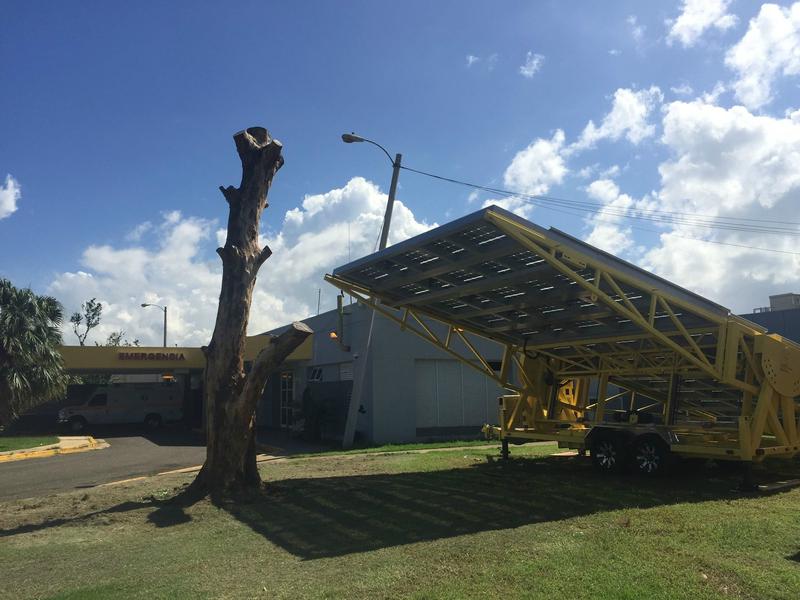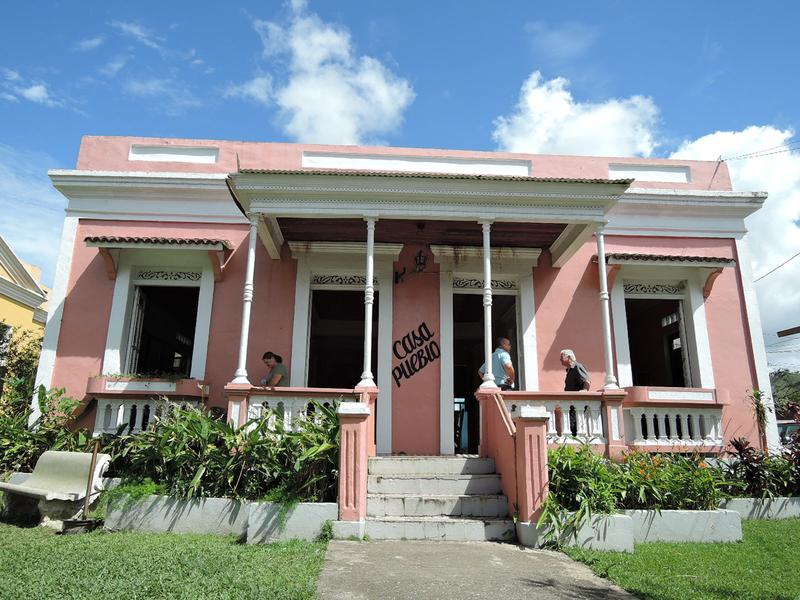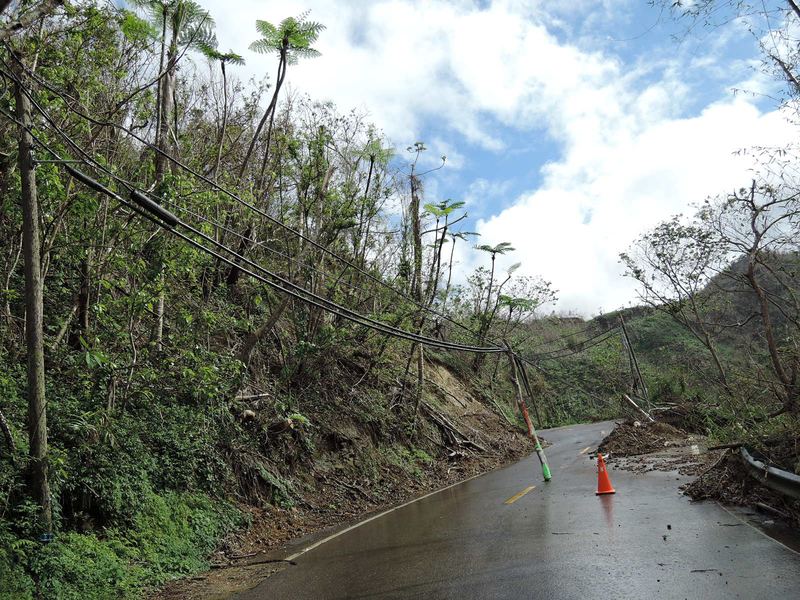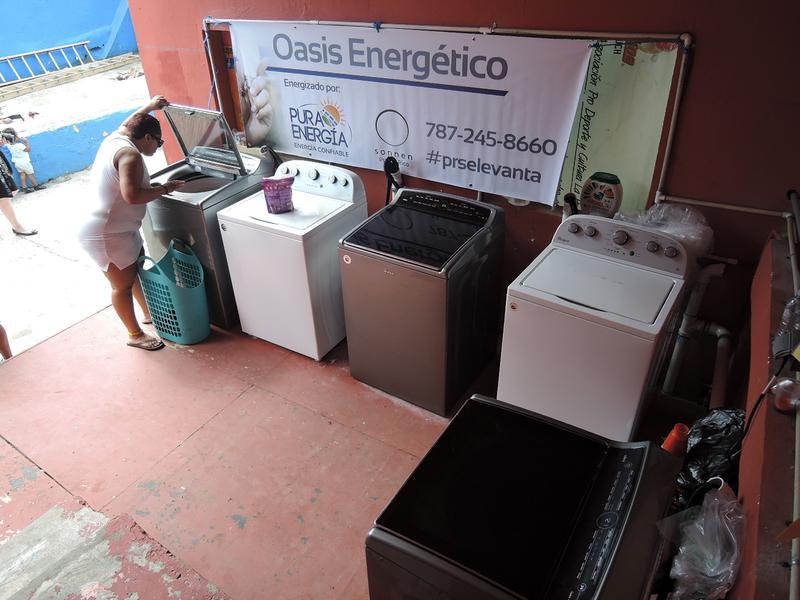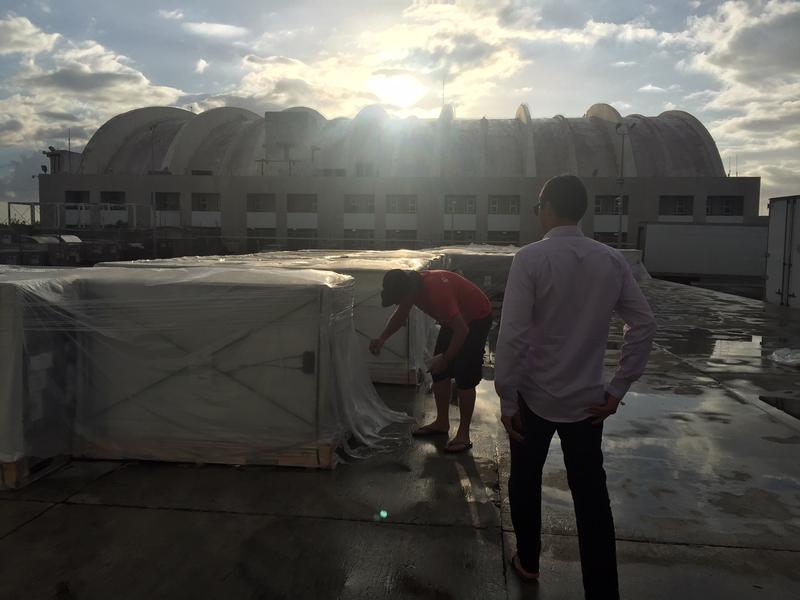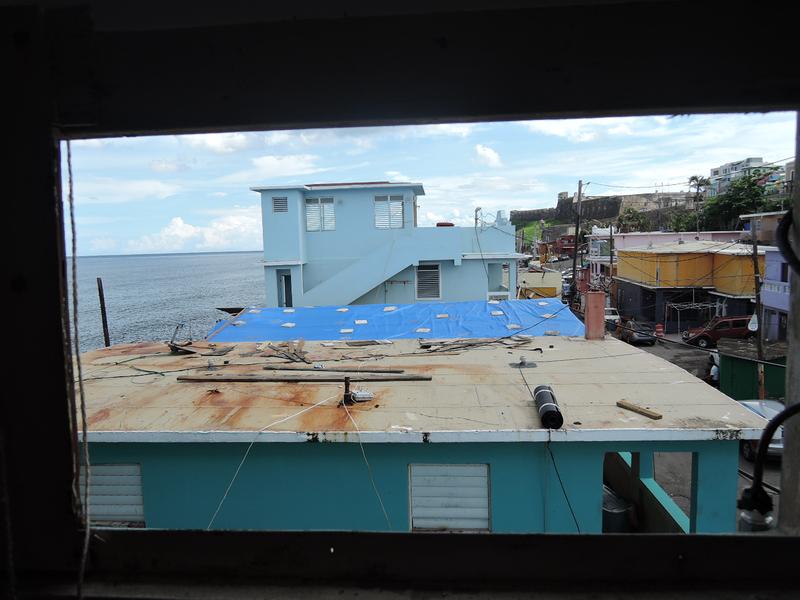
Walter Meyer is a landscape architect from Brooklyn, but on a recent afternoon, he was checking a massive delivery at the Aguadilla airport in Puerto Rico.
The shipment — over 2,000 donated photovoltaic panels — arrived for Resilient Power Puerto Rico, a group Meyer co-founded to set up free solar-powered hubs on the island. The idea grew out of his work in the Rockaways area of New York City after Superstorm Sandy knocked out power there in 2012.
The scale of the effort in Puerto Rico is much larger: The group wants to install solar hubs in 100 towns in 100 days. And it has many sponsors and collaborators. The Manhattan Borough President, for example, helped coordinate this shipment from a warehouse in Utah, and the artist Kara Walker raised funds for a solar power generator for a hospital in nearby Isabela.
The ambitions for solar power are sky-high in Puerto Rico right now. Even before the devastation, electricity cost customers three times as much as in Florida because of the cost of transporting oil. And the system of above-ground power lines proved vulnerable to high winds and rain.
Despite having sun year-round, only 2 percent of the island's electricity came from renewable sources last year.
"The reason everyone is excited about solar in Puerto Rico right now is it's the first time there has been a chance to reboot at the scale of a state. It's at the scale of Connecticut," Meyer said. "We're talking two years from now, Puerto Rico can be 100 percent renewable with the amount of actors and agents that are coming into this space including all the battery manufacturers."
Meyer advised the Obama administration on resiliency efforts. He estimated it would be a $30- to $40-billion-dollar lift to power Puerto Rico using only renewable energy.
The mainland media made much of Tesla’s Elon Musk interest in the island, and Gov. Ricardo Rosello recently went on record as being pro-solar. He testified before the U.S. Senate that he’d like to use wind and solar for as much as 25 percent of the island’s energy needs.
“I am 100 percent backing renewables," he said. "This is an opportunity to make micro-grids in Puerto Rico so they can be sustained in different areas."
Meyer said he was encouraged by what he's heard but he had some advice for the Governor: Don’t let solar power be only for the rich.
“If there is one thing I would tell Governor Rosello, it’s that we don't want to do this on the backs of the working poor in Puerto Rico," he said. "We have to take care of community-based solar first and foster its growth because it’s easy to mow it over.”
Installers currently have waiting lists of private clients who will pay around $25 thousand dollars to equip their homes with solar power panels. But that’s not how most people here live. Puerto Rico has a 45% poverty rate.
In the mountainside town of Adjuntas, the community organization Casa Pueblo has given out roughly 5,000 solar lanterns. The New York City Council recently dropped off a few boxes and the Sierra Club also partnered with Casa Pueblo to provide lanterns. The group is developing a small unit that would power an energy-efficient fridge and a few lights for around $500 dollars per household.
Arturo Messol Deya, the associate director of Casa Pueblo and a professor at the University of Puerto Rico, said the government hadn't reached the communities who needed the most help — and it's possible it never will.
"The power authority already stated that for some communities they are not going to rebuild the system at all. So, isolated communities are more at risk of being left behind," he said. "There’s a lot of suffering so we need to engage actively right away, and that’s what we have been doing. But we’re going to do it from the bottom up."
Casa Pueblo has been pushing for 50 percent solar generation in Puerto Rico, twice what the governor said he’d like to see. Messol Deya said installing solar power in public buildings like local schools was critical.
Maria Palou, the governor's advisor for economic development and infrastructure, told WNYC that government leaders loved the idea of solar power but wouldn't offer specifics.
“There’s going to be an energy reform. We are working on it right now and, hopefully in the next few months, we’re going to be publishing it," she said.
Palou was visiting a solar-powered laundromat in the community of La Perla, in Old San Juan. The laundromat was set up by Sonnen, a German company that makes batteries to store energy from solar panels. So far, they’ve powered six projects in Puerto Rico through their humanitarian foundation; the goal is fifteen by the end of the year.
Sonnen representatives drove to the site recently, having just come from a meeting with the governor’s staff. Blake Richetta, a senior vice president at Sonnen, said one of the policies discussed was California ZNE, or Zero Net Energy.
The state law requires that every house built in California produce as much energy as it uses, by the year 2020. Richetta said he believed Puerto Rico should do something similar so that all new homes would have to have solar panels and a battery.
How to pay for that effort is unclear. It's still not known how much federal aid the island will get just to rebuild the tens of thousands of homes destroyed by the hurricane.

